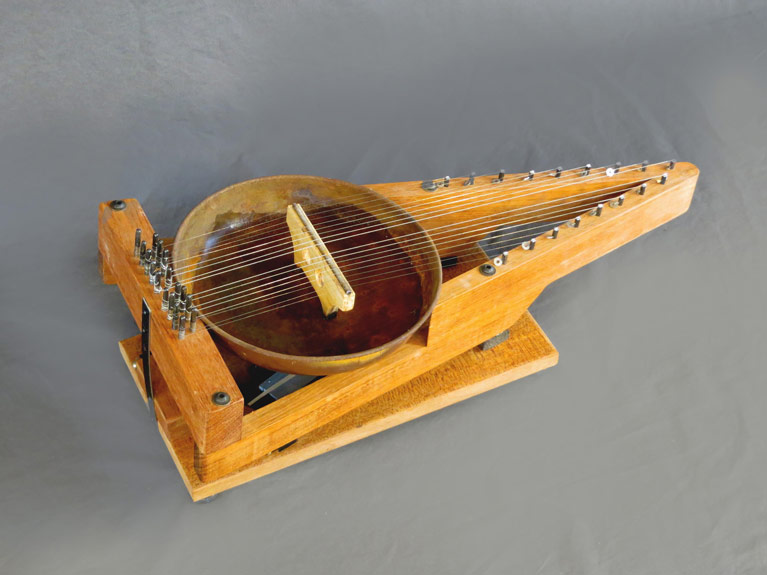PSALT WATER
This instrument takes its basic design idea from the instrument usually referred to as “bowed psaltery.” The design, popularized by various makers from the 1920s forward, is ostensibly based on pictorial representations of certain ancient instruments. It’s a clever design because it makes a large number of strings individually accessible to the bow (which isn’t possible with most other bowed instrument designs). This is done by bowing each string in the short accessible segment adjacent to the hitch pins. Because the strings are played open and not damped by fingering, and because they’re bowed sul ponticello (right at the bridge), the sound is especially bright and ringing. What differentiates the instrument on this page from other bowed psalteries is the shifting resonances caused by moving water in the metal resonator pan. The instrument is mounted in such a way that the player can rock it with one hand while bowing with the other; this keeps the water moving to create the shifting resonances.
The shifting water idea was first exploited in Richard Waters’ famous Waterphone. For another instrument with this feature, see here. In the sound clip, Psalt Water is joined by a rumba box and breath flute.

